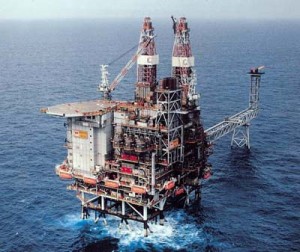 WTI and Brent futures closed the week lower, as the conflict in Iraq was seen sparing the main southern oilfields. The US mark Independence Day next week, meaning trade will be muted, with many exchanges closing at midday on Thursday, and not working on Friday, July 4.
WTI and Brent futures closed the week lower, as the conflict in Iraq was seen sparing the main southern oilfields. The US mark Independence Day next week, meaning trade will be muted, with many exchanges closing at midday on Thursday, and not working on Friday, July 4.
West Texas Intermediate futures for settlement in August closed for $105.74 per barrel on Friday on the New York Mercantile Exchange, down 0.09% for the day and logging about 1% weekly loss. Weekly high and low stood at, respectively, $107.50 per barrel on Wednesday and $105.03 per barrel on Thursday. Last week the US benchmark gained 0.6%.
Meanwhile on the ICE in London, Brent futures due in August recorded a 0.08% daily gain to close for $113.30 per barrel on Friday, losing about 1.3% for the week. Brent’s premium to August WTI stood at $7.56, widening last week’s closing margin of $7.98. Weekly high and low were at, respectively, $115.66 per barrel on Monday and $112.90 per barrel on Friday. The European brand added about 2% last week.
“Markets are beginning to position for the likelihood that insurgents will be contained from any further incursions to the south, allowing oil exports to be maintained,” Ric Spooner, chief strategist at CMC Markets in Sydney, said in a note today, cited by Bloomberg.
Iraq
Iraqi authorities are acquiring fighter jets from Russia and Belarus, the government reported, in a bid to bolster the military against the Sunni rebels, led by the extremist organization ISIS (Islamic State in Iraq and the Levant). “God willing within one week this force will be effective and will destroy the terrorists’ dens,” he said, cited by the BBC.
Earlier, Prime Minister Nouri Maliki dismissed a widely discussed and promoted idea of a government of national unity, including more Sunni and Kurdish representation. Such calls represented a “coup against the constitution and an attempt to end the democratic experience”, he warned, the BBC reported.
Meanwhile, Kirkuk, an oilfield center, which was occupied by forces of the autonomous Kurdish government after the Iraqi military fled, saw the first episode of violence yesterday, as a car-bomb killed several and injured dozens. The Kurdish state is seen as a bulwark against the Sunni onslaught, and is yet to see major confrontations with its new ISIS-dominated neighbors in Iraq.
Also, Syrian military aircraft have bombed positions of ISIS militants near the border earlier today, in a move welcomed by PM Maliki.
Previously, insurgents took control of the country’s largest oil refinery, which supplies about a third of Iraq’s fuel demand. Elsewhere, militants seized all official border crossings in Syria and Jordan. The Jordanian army has been on full alert, protecting its borders against incursions, the Jordanian military said.
The Iraqi government insisted insurgents do not threaten Baghdad, nor the southern oilfields, which account for more than 75% of Iraqi oil output. Furthermore, the Iraqi oil minister said production and exports will actually increase over the next month.
Iraq is OPEC’s second-top oil producer, and exports some 3 million barrels per day from its main southern terminal at Basra.
“Oil exports will witness a big increase, as recent events didn’t reflect negatively on Iraq’s crude output and exports,” the nation’s oil minister, Abdul Kareem al-Luaibi, said in an interview in Baghdad on June 25, cited by Bloomberg. “International oil companies are working normally in Iraq.”
US reports
Several readings on the US economy, which consumes 21% of all oil, were reported this week. Jobless claims were slightly worse than a week earlier, while personal spending and income for May were slightly better than before, at 0.2% and 0.4% growth, respectively. Personal income and spending are leading indicators for consumer spending, which generates nearly 80% of US GDP.
Previously, the US posted some worse-than-expected data on Wednesday. Q1 GDP growth was far below the expected contraction of 1.8% at -2.9%, which is also the worst quarterly growth since Q1 of 2009. Durable goods orders for May also scored below par, though the negative sentiment was largely already priced. Also, Markit posted its preliminary reading on US services PMI for June, for a standing well above expectations at 61.2. A reading of 50 or higher means expansion, and vice versa. The greater the distance from 50, the more sizable an expansion or contraction.
The services sector accounts for about 80% of US GDP.
“There’s a broad theory that the recovery in the U.S. is gaining pace,” Michael McCarthy, a chief strategist at CMC Markets in Sydney, said for Bloomberg. “In the face of increasing supplies, prices have held firm and that suggests that the clear driver at the moment is geopolitical tensions.”
The US Energy Information Administration (EIA) posted its weekly oil inventories report for the seven day through June 20 on Thursday. The log revealed a 1.742 million-barrel gain for commercial crude oil inventories, while gasoline and distillates added 0.7 and 0.4 million barrels, respectively. Refineries were shown to have operated at an increasing pace of 88.5%, though gasoline production was down almost 10%. Oil at Cushing was slightly more than previously.
Elsewhere, China, which accounts for 11% of total oil consumption, posted industrial profits for May, for a standing of 8.9% growth on an annual basis, after 9.6% were logged in April. Earlier in the week, HSBC revealed its surprisingly positive reading on Chinese manufacturing PMI. The industrial sector accounts for nearly half of Chinese GDP.
Next week
The US will post several key readings next week. Pending home sales for May will be revealed on Monday, and analysts expect a 0.8% monthly gain, after 0.4% were logged in April. The real estate industry accounts for about 13% of US GDP.
ISMs final reading on manufacturing PMI for June will be released on Tuesday, with forecasts of accelerating growth for the factory sector of the US, before a separate report on May factory orders on Wednesday, which are also projected to have grown. ISM will post its non-manufacturing PMI for June on Thursday, and experts suggest accelerating growth in the services sector as well.
Thursday will feature the key report on employment for June. The unemployment rate is set for an unchanged 6.3%, while nonfarm payrolls have probably added 210 000 – 213 000, after a 217 000 figure for May. Payrolls are a leading indicator for the overall health of the economy.
China
HSBC, as well as the Chinese government, will release their separate readings on manufacturing PMI for June early on Tuesday. HSBCs preliminary figure was surprisingly positive, at 50.8, and recently the governments reports post a higher standing. Thursday will see services PMI readings, again from both sources.
Eurozone
The Eurozone, which accounts for about 14% of total oil demand, will post several key reports next week. Manufacturing PMI for June and unemployment rate for May will be posted on Tuesday, with expectations of little change in both. Thursday will see services PMI for June and retail sales for May, as well as a key European Central Bank (ECB) decision on the benchmark lending rate and deposit rates. The ECB cut both rates last time, for a 0.15% central lending rate and -0.10% deposit rate, which taxes commercial banks if they keep their money out of circulation.





